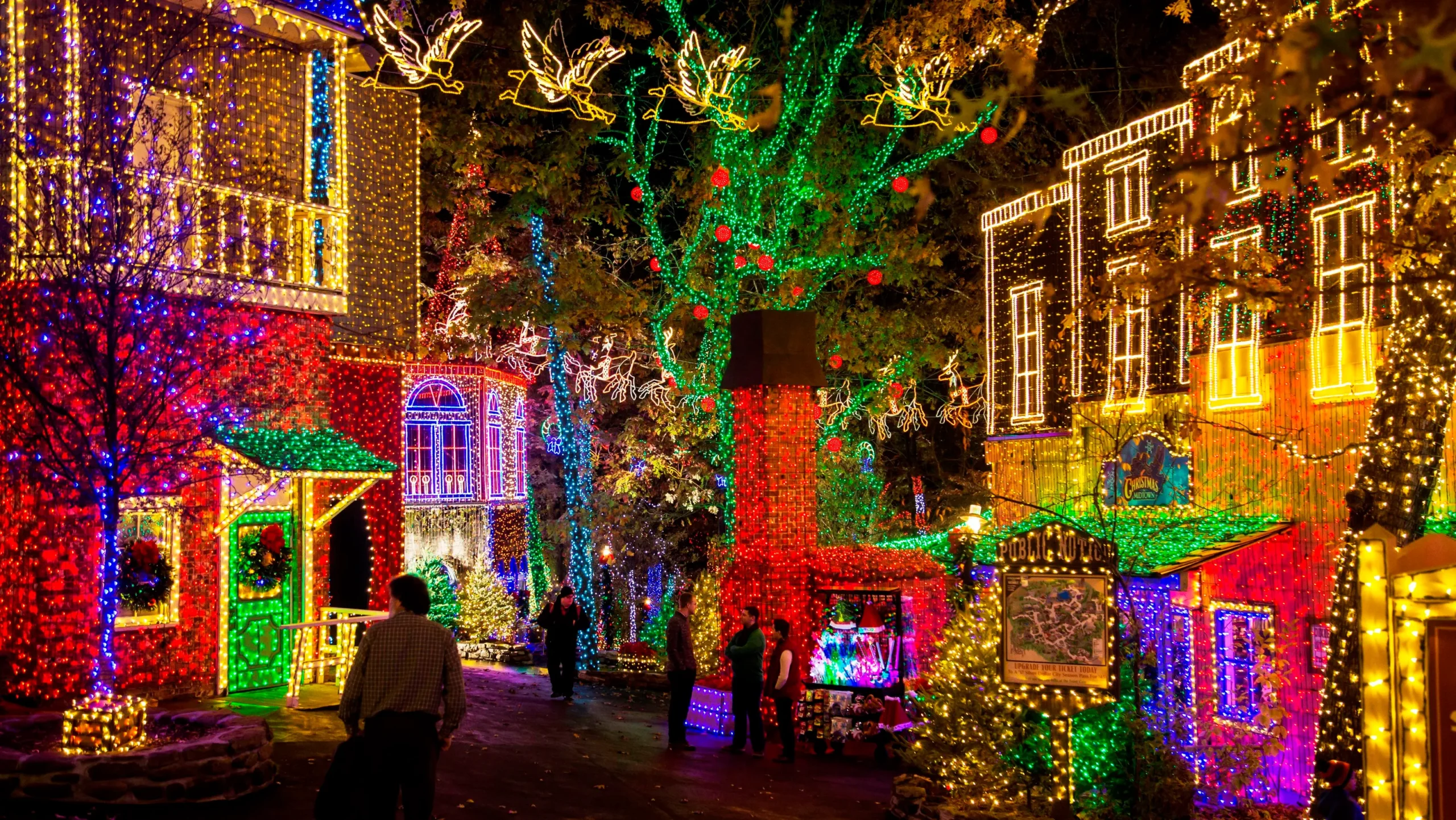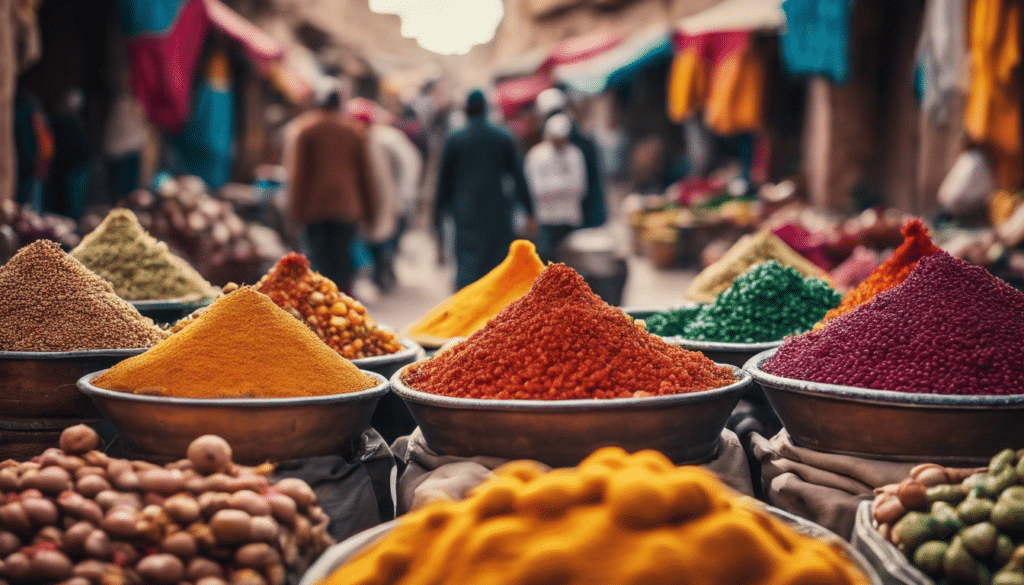Sushi, tempura, and Kyoto’s elegant kaiseki are some of the first things that come to mind when people think of Japanese food. Kyushu, Japan’s southernmost main island, has one of the country’s richest and most diverse food cultures. The island has a unique food culture that has been shaped by its geography, history, and traditions. For example, Fukuoka has busy ramen shops, Miyazaki has sizzling wagyu beef, and Oita has volcanic hot spring foods.
This Kyushu food guide tells you what to eat and why these foods are important. Kyushu’s food offers flavors and experiences that last forever, whether you’re going to Japan for the first time or are an experienced traveler looking to go deeper.
The Basics of Kyushu Food
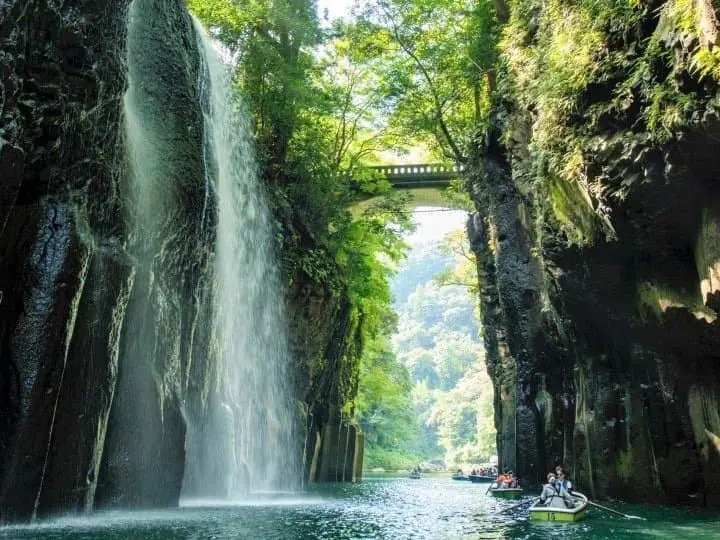
Three main things have shaped Kyushu’s food culture:
- Geography: Kyushu has fertile volcanic soil, warm subtropical weather, and a long coastline. It grows everything from rice and citrus to seafood and high-quality beef.
- Cultural Exchange: Kyushu was Japan’s historic gateway to the outside world, and it took in ideas from China, Korea, Portugal, and the Netherlands. This is why Nagasaki has foods like castella sponge cake and champon noodles that aren’t found anywhere else.
- Regional Identity: Each prefecture has its own signature dishes that use local ingredients, making it a culinary map worth exploring.
Fukuoka and Hakata: Where Tonkotsu Ramen Began
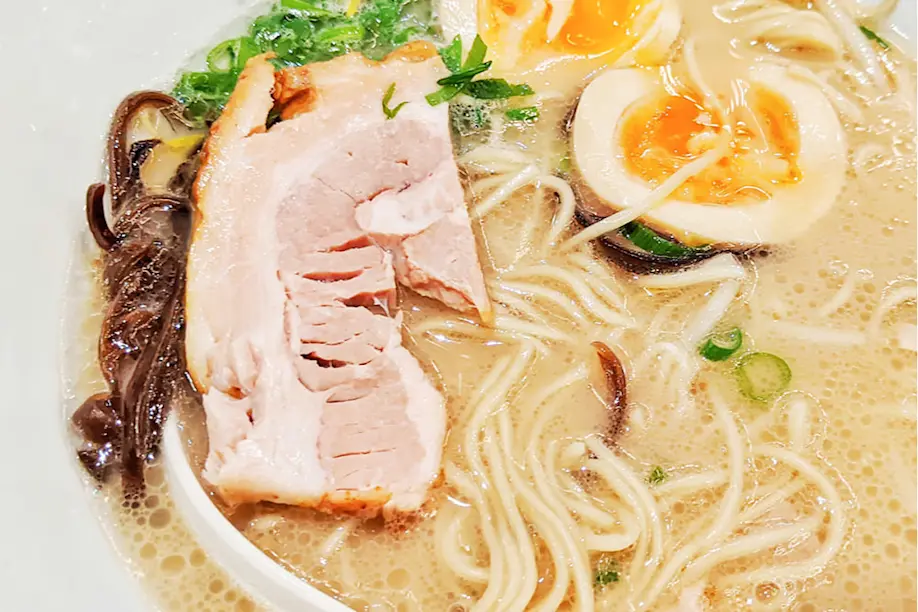
Hakata Ramen
Hakata ramen, Fukuoka’s most famous food export, is a must-try for any Kyushu food guide. Hakata ramen has a rich, creamy pork bone broth (tonkotsu) that is cooked for hours until it has a deep, velvety flavor. This is different from the lighter soy-based ramens you can find in Tokyo.
- Noodles: Thin, straight, and firm so they can soak up the broth quickly.
- Toppings: Chashu (braised pork belly), green onions, pickled ginger, sesame seeds, and sometimes wood ear mushrooms.
- Customization: A lot of places offer “kaedama,” which is an extra serving of noodles that you can add to your broth.
Ichiran Ramen is a famous place to try it. It started in Fukuoka and has since grown into a global chain. But places like Ippudo and small shops in the neighborhood often give you an even more real experience.
Yatai Food Stalls: Eating on the Street with Tradition
Fukuoka also has yatai stalls, which are small outdoor food stands that open up along the riverbanks and busy streets at night. These stalls sell gyoza, ramen, yakitori, and even oden.
Not just the food, but also the experience of being with other people makes them special. People from the area and people from out of town sit next to each other and talk to strangers and chefs. Yatai culture has been around for generations, unlike short-lived food trends. This makes it a must for anyone who wants to taste Kyushu’s soul.
Nagasaki: Champon Noodles and Maritime Heritage with Fusion Flavors
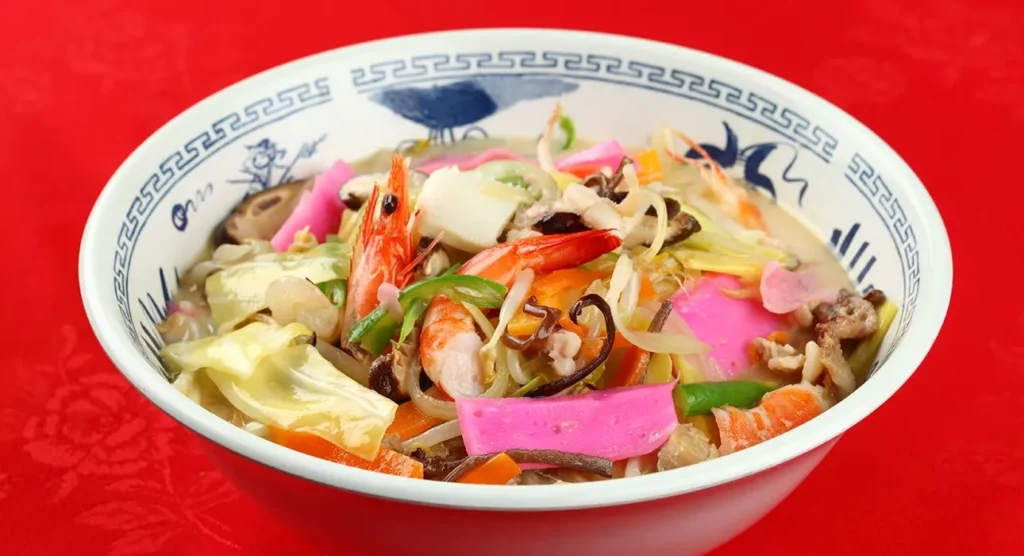
Champon Noodles
Champon, Nagasaki’s most famous dish, shows how Chinese culture has shaped the city for hundreds of years. Champon is a hearty, one-bowl meal that is still a comfort food staple. It is made by stir-frying pork, seafood, and vegetables before adding broth and special noodles.
Cake Castella
In the 16th century, Portuguese traders brought castella to Japan. It is a simple sponge cake made with sugar, flour, eggs, and starch syrup. It’s one of the most famous souvenirs from Nagasaki these days.
Sara Udon
Another classic from Nagasaki is Sara udon, which has crispy fried noodles on top of a tasty stir-fry of vegetables, seafood, and pork. It’s not about the broth as much as the crunchy textures that go well with the thick sauce.
Kumamoto: Strong Tastes and Different Customs
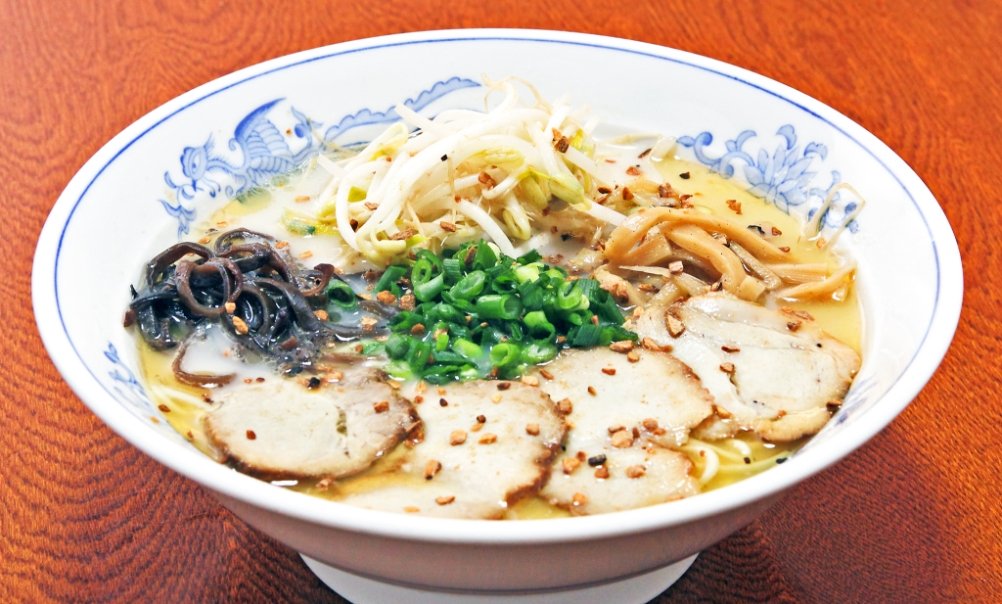
Ramen from Kumamoto
Kumamoto ramen doesn’t get as much attention around the world as Hakata ramen, but it should. The broth is also made from pork, but it’s usually lighter and has a smoky taste because it has garlic oil (mayu) in it.
Horse Sashimi (Basashi)
Basashi is a unique dish from Kyushu that consists of raw horse meat that is usually served thinly sliced with soy sauce, garlic, and onions. It may sound strange, but people love it for its soft texture and clean flavor.
Karashi Renkon
This dish is a real local specialty. It has lotus root stuffed with spicy mustard and miso paste and is then deep-fried. It’s crunchy and spicy, which makes it a great snack with sake.
Miyazaki: Sun, Mangos, and Wagyu Beef
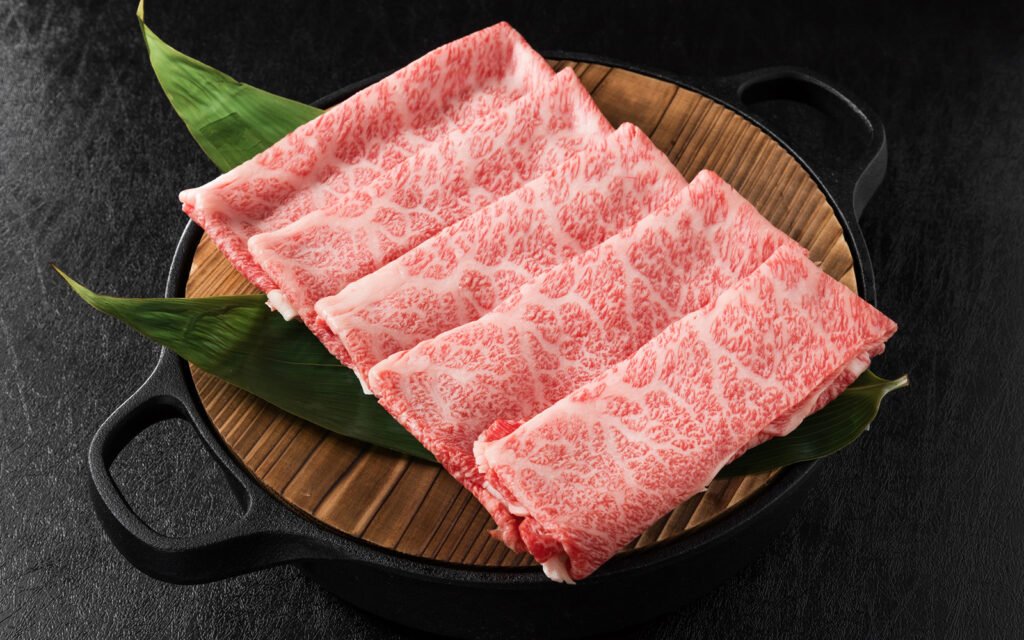
Beef from Miyazaki
Miyazaki wagyu is often compared to the more famous Kobe beef and is thought to be some of the best beef in Japan. It has a lot of marbling and a texture that melts in your mouth. It can be served as steak, sukiyaki, or shabu-shabu.
Nanban Chicken
Chicken nanban is a comfort food that comes from Miyazaki. It is deep-fried chicken covered in a sweet vinegar sauce and topped with creamy tartar. People love it at home and in restaurants all over the country.
Fruits from the Tropics
Miyazaki is also known for its mangoes, which are often given as expensive gifts in Japan because of the warm weather.
Kagoshima: Southern Comfort, Sweet Potatoes, and Kurobuta Pork
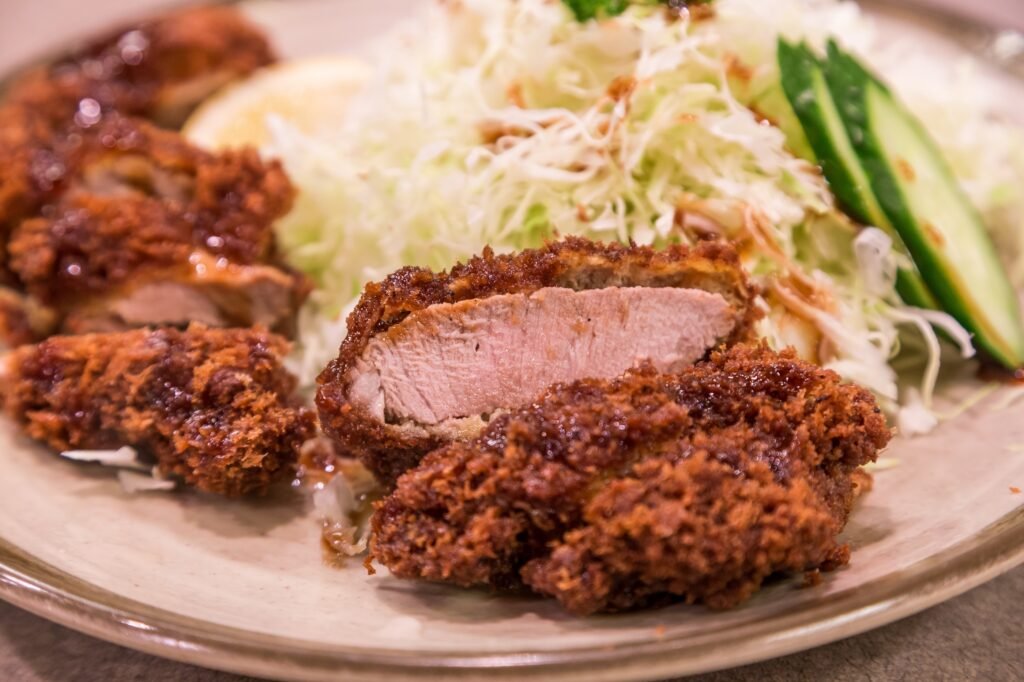
Kurobuta Pork
Berkshire black pigs live in Kagoshima, and they make delicious pork called kurobuta. People like it in shabu-shabu, tonkatsu, and hot pots.
Satsuma-age
Satsuma-age is a popular snack that comes from Kagoshima’s fishing tradition. It is a deep-fried fishcake made from ground fish and starch.
Shochu Spirit
Kagoshima is also Japan’s top producer of imo shochu, which is a distilled spirit made from sweet potatoes. Sake is brewed, but shochu is distilled and goes well with local food.
Oita: Hot Springs and Local Food
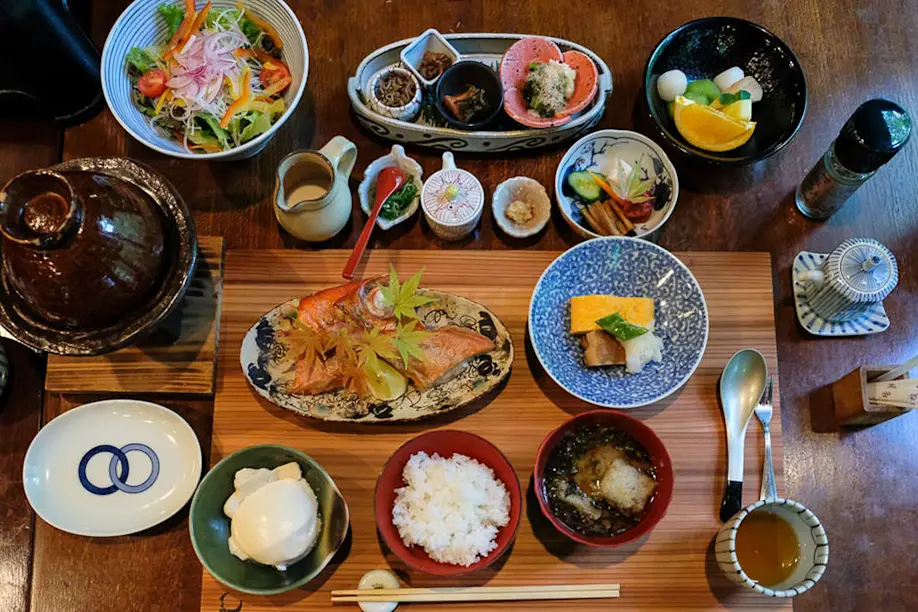
Hell Steaming (Jigoku Mushi)
Oita is known for its onsen (hot springs), and people there cook with natural geothermal steam. Jigoku mushi is the name of this method that makes seafood, vegetables, and eggs that are good for you and taste good.
Toriten (Tempura Chicken)
Toriten is another Oita specialty. It’s fried chicken that has been lightly battered and is often dipped in ponzu sauce. It’s simple, but it feels good.
Citrus Kabosu
Kabosu is a green citrus fruit that only grows in Oita. It adds flavor to fish dishes, soups, and drinks. The smell is so fresh that you won’t forget it.
Saga: Great Seafood and Subtle Flavors
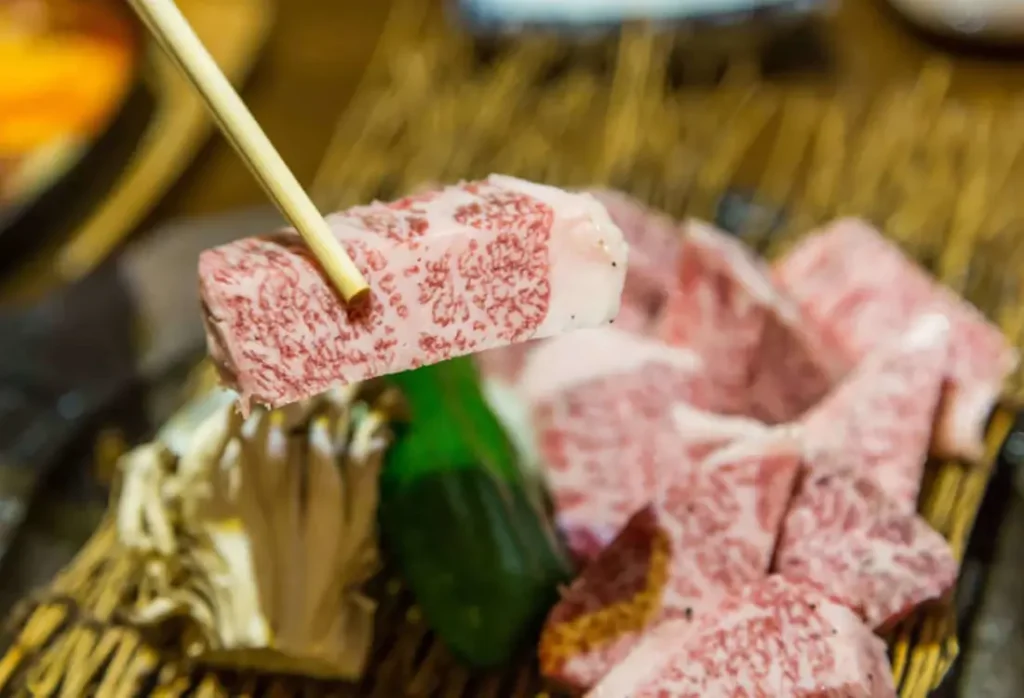
Saga Beef
Saga makes world-class wagyu beef, just like Miyazaki. It’s known for its perfect balance of marbling and lean texture.
Ikizukuri (Live Squid)
In Saga, Yobuko is famous for its live squid sashimi, which is made by slicing up freshly caught squid and serving it right away. This makes it the freshest sashimi you can get.
Food and Ceramics Culture
Saga is also known for its ceramics, like Arita and Imari ware, which make meals more special by serving food in beautiful, hand-made dishes.
Food in Kyushu by the Season
Kyushu has a mild climate all year long, but some foods are better in certain seasons:
- Spring: Bamboo shoots, wild mountain vegetables, and hanami bentos under cherry blossoms.
- Summer: Nagashi makes cold somen noodles. Somen flows in streams, and there are tropical fruits like mango and chilled shochu.
- Autumn: Sweet potatoes, chestnuts, and hearty hot pots.
- Winter: Tonkotsu ramen and oden from yatai stalls, as well as dishes steamed in hot springs in Oita.
Helpful Hints for Discovering Kyushu’s Food Scene
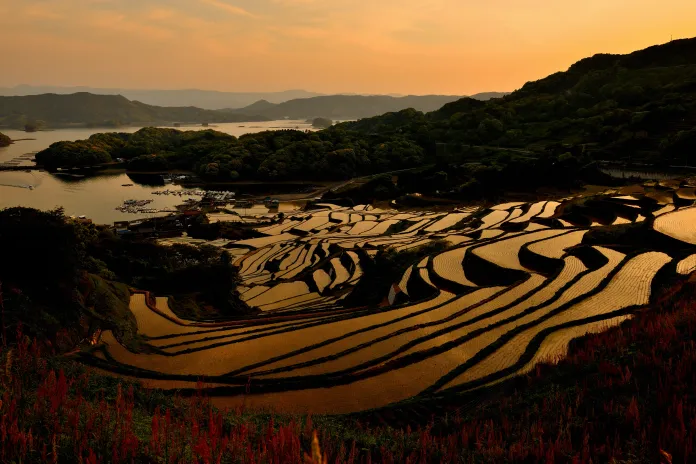
- Fukuoka is a good place to start because you can use it as a base to try ramen, yatai stalls, and other local foods.
- Check out the local markets. The Yanagibashi Rengo Market in Fukuoka or the Karato Market in Shimonoseki (just across from Kyushu) are great places to see what kinds of seafood are available in the area.
- Try Regional Chains: Local restaurant chains like Joyfull and Gyoza no Ohsho serve real food at reasonable prices, unlike international fast food.
- Pair with Drinks: Drinks like shochu in Kagoshima and craft beer in Fukuoka make the meal better.
- Respect Local Customs: There aren’t many seats at yatai stalls, so be ready to share space and enjoy the lively atmosphere.
Why Kyushu Food Lasts as a Culinary Journey
Kyushu’s food is special not only because of how it tastes, but also because of how it connects people. Every dish tells a story of strength, flexibility, and pride. The creamy tonkotsu ramen that fed Fukuoka’s workers, the Nagasaki champon that came from Chinese trade, or the Oita hot spring dishes that were made by nature itself—all show how people have lived in harmony with the land and culture for hundreds of years.
Kyushu’s food traditions last because they are an important part of the region’s way of life, unlike short-lived food trends. This makes the island a place that foodies will always want to visit because they want more than just a meal; they want an experience.
Conclusion: Planning Your Kyushu Food Trip
This Kyushu food guide talks about the island’s most famous dishes, like Hakata ramen, yatai stalls, wagyu beef, seafood, and more. Whether you spend a night going from stall to stall in Fukuoka or a week traveling across the prefectures, Kyushu promises food discoveries that will stay with you for years to come.
Food here is more than just fuel for travelers; it’s a way to learn about Kyushu’s history, environment, and people. The flavors of Kyushu will always greet you with warmth, depth, and memories that will last a lifetime.
Don’t Miss:



